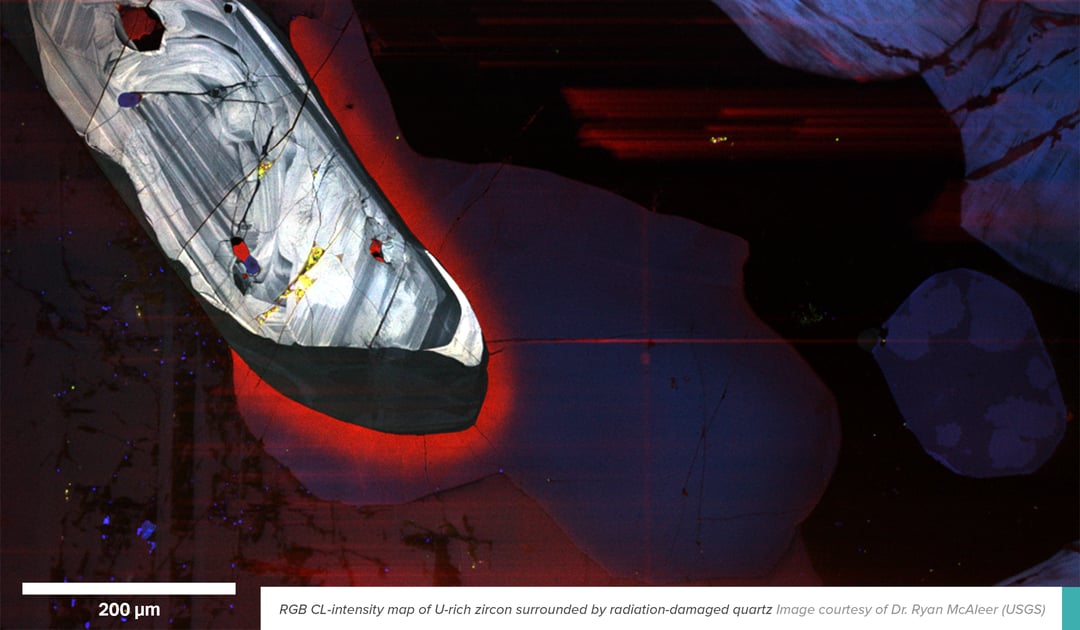The advancements made in methods and tools used in geochronology have allowed researchers to gain many insights into life on Earth. Geochronology today goes far beyond just the measurement of absolute ages for geological materials. In fact, it tries to find answers to the most difficult question: when did life arise on Earth? Challenging questions like this require new kinds of geochronologic capability. In this post, we talk about cathodoluminescence (CL) and its benefits for geochronological studies.
CL imaging is applied in the study of zircons, for example, which are very strong and resilient crystals, made of ZrSiO4. Zircons that have survived erosion and the environmental changes that have taken place over the course of the earth’s evolution, contain a record of these processes in the form of zonation. They also contain trace amounts of radioactive elements and are therefore used for radiometric dating. CL imaging is a tool to screen zircon crystals before performing high-resolution SIMS (Secondary Ion Mass Spectrometry), for eg., for isotope analysis, as this is a slow and expensive technique.
In a recent publication by Aleinikoff et al. [1], the researchers performed CL imaging of zircons, together with electron imaging and trace element analysis, to study thin sections of Hawkeye Granite Gneiss. Based on the zonation observed in CL, they determined the geological processes that took place, and were able to establish the age of the rocks with the help of isotope analysis. Since such rocks often have complex and chaotic surface textures, they cannot be interpreted using electron imaging alone and CL is a powerful analysis tool.
CL imaging is not limited to zircons, but can be applied to various geological materials, and is a powerful analysis tool due to its speed, ability to image the entire spectral range from UV to IR, and its implementation in SEM, enabling correlative electron and CL microscopy. Delmic CL Solutions are powerful detectors, which can be used for imaging geological materials with ease. Interested in learning more about the possibilities of Delmic systems for geological research? Then make sure to watch the webinar below.
References
[1] J. N. Aleinikoff, G. J. Walsh, R. J. McAleer, New interpretations of the ages and origins of the Hawkeye Granite Gneiss and Lyon Mountain Granite Gneiss, Adirondack Mountains, NY: Implications for the nature and timing of Mesoproterozoic plutonism, metamorphism, and deformation. Precambrian Research, 358 (2021) https://doi.org/10.1016/j.precamres.2021.106112.
.png)








